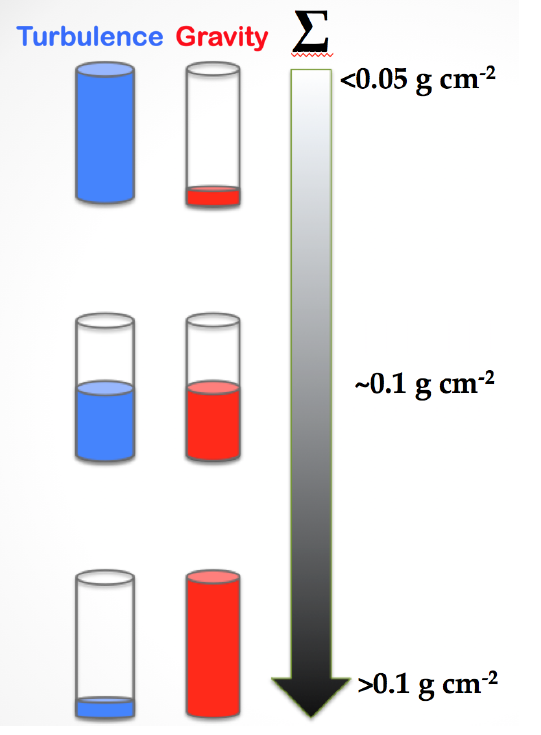| EPoS Contribution |
|
Multi-scale dynamics in star-forming regions: the interplay between gravity and turbulence
Alessio Traficante IAPS-INAF, Rome, IT | |
|
In the multi-scale view of the star formation process the material flows from large molecular clouds down to clumps and cores. In this paradigm it is still unclear if it is gravity or turbulence that drives the observed supersonic non-thermal motions during the collapse, in particular in high-mass regions, and at which scales gravity becomes eventually dominant over the turbulence of the interstellar medium.
To investigate this problem we have combined the dynamics of a sample of 70 micron quiet clumps, selected to cover a wide range of masses and surface densities, with the dynamics of the parent filaments in which they are embedded. The clump scales are analysed combining two surveys of 70 micron quiet clumps aimed to trace the kinematics with high-density tracers such as N2H+ (1-0) an HCO+ (1-0) and carried out with the IRAM 30m telescope. The filaments have been extracted from the Hi-GAL survey and their dynamics has been evaluated with ancillary CO data. We observe a continuous interplay between turbulence and gravity, where the former creates structures at all scales and the latter takes the lead when a critical value of the surface density is reached, Σ ~ 0.1 g cm-2. In the densest filaments this transition can occur at the parsec, or even larger scales, leading to a global collapse of the whole region and most likely to the formation of the massive objects. | |
 | |
| Caption: A cartoon representation of the interplay between gravity and turbulence in star-forming regions. A cloud begins to be compressed due to the effect of the strong ISM turbulence, with minimal contribution from gravity. As the material starts to accumulate in different eddies due to turbulence, these regions increase their surface density and with it the role of gravity in driving the non-thermal motions. As the density reaches the critical value of ~ 0.1 g cm-2, the motions induced by gravity dominate over the turbulence that, from this point, becomes subdominant. This critical value of the surface density can be reached at any spatial scales, depending on the initial conditions of the turbulent cloud. Gravity can therefore start to drive the motions at the core, the clump or even the filament scales in star-forming regions embedded in significantly dense clouds. | |
| Collaborators: G.A. Fuller, U Manchester, UK A. Duarte-Cabral, U Cardiff, UK D. Elia, IAPS-INAF, IT M.H. Heyer, U Massachusetts, US S. Molinari, IAPS-INAF, IT N. Peretto, U Cardiff, UK S. Schisano, IAPS-INAF, IT |
Key publication
Suggested Session: High-Mass Star Formation |

